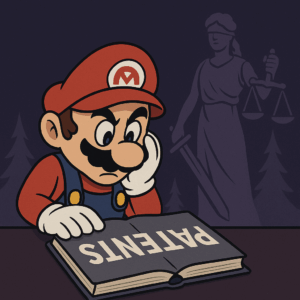 In early September 2025 the U.S. Patent and Trademark Office (USPTO) quietly granted Nintendo two patents, numbers 12,403,397 and 12,409,387, that are already sending ripples through the game-development world.
In early September 2025 the U.S. Patent and Trademark Office (USPTO) quietly granted Nintendo two patents, numbers 12,403,397 and 12,409,387, that are already sending ripples through the game-development world.
At first glance the filings look technical and harmless, filled with phrases like “storage medium,” “virtual space,” and “sub-character control.” But translated into everyday language, they represent a sweeping claim on mechanics that have been common in games for decades: summoning helper creatures to fight on a player’s behalf, and seamlessly switching between different rideable mounts or vehicles.
For gamers, those may sound like natural ingredients of countless adventures, from World of Warcraft and EverQuest to Pokémon itself. For developers, especially small independent studios, they now come with a new layer of legal risk. And for the industry as a whole, they reopen long-running questions about how the patent system treats software and game design, and whether it can keep innovation alive.
What the Patents Actually Cover
The first grant, Patent 12,403,397, describes a method in which a player summons a secondary character, think a Pokémon or a companion creature, into the game world. If an enemy is nearby, the summoned character automatically engages in combat. If not, it follows scripted behaviors until directed otherwise. The filing details both manual and automatic control modes and lays out how the game engine decides when to trigger battles or movement.
The second, Patent 12,409,387, concerns the way a game handles riding or mounting mechanics. It covers smooth transitions when a character mounts or dismounts creatures or vehicles, how terrain affects those transitions, and how the game updates controls and camera views during the process.
None of this is revolutionary. Creature-summoning has existed since the earliest role-playing games, and mount-riding has been standard from a early as The Legend of Zelda: Ocarina of Time to modern MMOs. That familiarity is exactly why the grants drew attention. By putting a legal fence around long-used ideas, the patents could, in theory, give Nintendo leverage far beyond its own titles.
Why Small Developers Are Alarmed
 Independent developers already operate on thin budgets and tighter schedules than big publishers. A single credible infringement claim, no matter how weak, can mean hiring lawyers, setting aside months of time, or redesigning entire gameplay systems mid-production. Even if a studio ultimately wins in court, the legal fees can exceed the cost of making the game itself.
Independent developers already operate on thin budgets and tighter schedules than big publishers. A single credible infringement claim, no matter how weak, can mean hiring lawyers, setting aside months of time, or redesigning entire gameplay systems mid-production. Even if a studio ultimately wins in court, the legal fees can exceed the cost of making the game itself.
Because patents are presumed valid once granted, the burden of proof falls on anyone who wants to challenge them. Inter partes review (the main mechanism for contesting a patent at the USPTO) can easily cost hundreds of thousands of dollars. For an indie team funding a project through Kickstarter or personal savings, that price tag makes a formal challenge impossible. The safer move is to avoid any mechanic that might be construed as summoning or seamless mounting, even if those ideas are central to a game’s design.
This chilling effect is hard to measure but easy to imagine. A developer dreaming of the next Monster Hunter or Palworld-style adventure might simply abandon it, fearing a cease-and-desist letter before launch. The lost games never appear on store shelves, and players never know what might have been.
Echoes of Past Patent Controversies
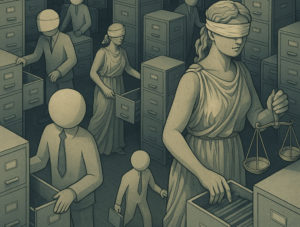 Veteran developers and tech historians see uncomfortable parallels with earlier episodes of so-called patent trolling.
Veteran developers and tech historians see uncomfortable parallels with earlier episodes of so-called patent trolling.
In the 1990s Unisys enforced a patent on the LZW compression algorithm used in GIF images, demanding licensing fees from websites and software makers years after GIFs had become an internet staple. Around the same time Forgent Networks asserted broad claims over the JPEG image format, threatening camera and software companies until the patent was finally overturned.
The pattern is familiar: a technology or method becomes widespread, a broad patent is issued or enforced late in the game, and suddenly innovators must pay or pivot. The gaming industry has had its own brushes with this, from loading-screen minigame patents to lawsuits over basic networking techniques. Nintendo’s new claims feel, to many, like a modern replay, except that this time the “technology” is not a compression algorithm but the fundamental building blocks of interactive play.
The Pokémon Palworld Backdrop
The timing also raises eyebrows. Nintendo and The Pokémon Company are already in a high-profile legal dispute with Pocketpair, the creators of Palworld, a monster-collecting survival game whose similarities to Pokémon sparked debate long before it became a smash hit. Some of the very mechanics described in the new patents, summoning allies into combat, riding them across varied terrain, are present in Palworld. While the lawsuit has not yet been resolved, the new patents give Nintendo fresh ammunition. Even if the company never files an additional claim, the existence of these patents strengthens its negotiating position and underscores the power imbalance between a global publisher and a small studio.
How Did These Patents Get Through?
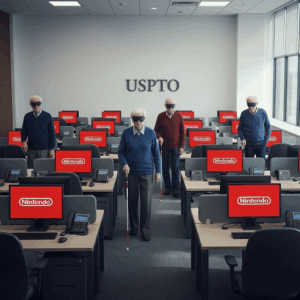 Critics argue that the USPTO, whose mandate is to foster innovation by granting rights only to novel and non-obvious inventions, failed in its basic duty. Much of the relevant prior art isn’t hidden in obscure journals; it lives in plain sight in decades of games, manuals, and gameplay footage. Yet patent examiners often rely on earlier patents and academic literature, not on exhaustive searches of entertainment media. Unless an examiner is unusually well-versed in gaming history or is presented with explicit evidence of older mechanics, overly broad claims can slip through.
Critics argue that the USPTO, whose mandate is to foster innovation by granting rights only to novel and non-obvious inventions, failed in its basic duty. Much of the relevant prior art isn’t hidden in obscure journals; it lives in plain sight in decades of games, manuals, and gameplay footage. Yet patent examiners often rely on earlier patents and academic literature, not on exhaustive searches of entertainment media. Unless an examiner is unusually well-versed in gaming history or is presented with explicit evidence of older mechanics, overly broad claims can slip through.
Once a patent issues, undoing it is far harder than stopping it in the first place. A granted patent enjoys a legal presumption of validity. Challenging it requires an expensive reexamination or a court case, both of which typically begin only if someone is willing, and financially able, to act. That puts the USPTO in the awkward position of having to review and possibly repudiate its own prior decision, something the agency is institutionally reluctant to do. In short, a single missed piece of prior art can turn into a twenty-year monopoly.
The Broader Consequences for Game Design
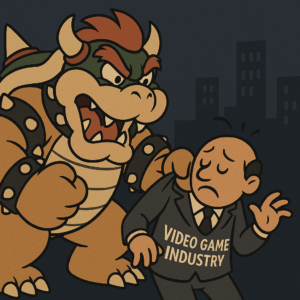 If Nintendo chooses to enforce these patents aggressively, the effects could reach far beyond monster-catching games. Popular genres that rely on companions or mounts, massively multiplayer online games like World of Warcraft and Runescape, role-playing games from Final Fantasy to Elden Ring, even certain real-time strategy titles, could find themselves in a legal gray zone. Developers might need to strip features, negotiate licenses, or redesign core systems simply to stay safe.
If Nintendo chooses to enforce these patents aggressively, the effects could reach far beyond monster-catching games. Popular genres that rely on companions or mounts, massively multiplayer online games like World of Warcraft and Runescape, role-playing games from Final Fantasy to Elden Ring, even certain real-time strategy titles, could find themselves in a legal gray zone. Developers might need to strip features, negotiate licenses, or redesign core systems simply to stay safe.
The nightmare scenario is a landscape where basic gameplay archetypes are parceled out to whoever filed paperwork first: one studio effectively “owns” the idea of summoning allies, another controls seamless vehicle transitions, and others stake claims on genre staples like crafting or skill trees. Imagine a world with only one legally protected real-time strategy game, one first-person shooter, one massively multiplayer online world. It sounds extreme, but the logic of these patents points in that direction.
Players, too, stand to lose. Fewer studios experimenting with established mechanics means fewer fresh twists on beloved genres. Innovation often comes from small teams willing to mix familiar elements in unexpected ways; if those elements become legal minefields, experimentation will stall.
Why Enforcement Is Tricky, Yet Still Threatening
Supporters of the patent system note that broad language on paper does not guarantee sweeping victories in court. To win an infringement suit, Nintendo would have to show that a defendant’s game matches the specific claims of the patent, not just its spirit. Courts can and do narrow claims, and prior art unearthed during litigation can invalidate a patent entirely.
But that legal reality offers little comfort to a studio without the money to litigate. The cost of proving innocence can itself be fatal. For many developers, the mere existence of the patent functions as a deterrent, which gives the patent owner most of the leverage without ever setting foot in a courtroom.
A System in Need of Repair
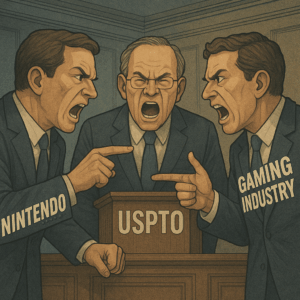 These cases highlight a structural flaw in the way the United States handles software and game patents. Examiners are overworked and rarely experts in niche creative fields. Prior art searches lean heavily on existing patents and technical papers rather than on the vast, fast-moving world of commercial games. And while mechanisms like inter partes review exist to correct mistakes, they depend on outsiders spending large sums to prompt action. The USPTO, in effect, is asked to judge its own potential errors, something no institution does eagerly.
These cases highlight a structural flaw in the way the United States handles software and game patents. Examiners are overworked and rarely experts in niche creative fields. Prior art searches lean heavily on existing patents and technical papers rather than on the vast, fast-moving world of commercial games. And while mechanisms like inter partes review exist to correct mistakes, they depend on outsiders spending large sums to prompt action. The USPTO, in effect, is asked to judge its own potential errors, something no institution does eagerly.
Reform is possible. Better training and resources for examiners, clearer rules limiting patents on abstract gameplay concepts, and stronger early-stage review could all reduce the odds of overbroad grants. Industry groups could help by maintaining accessible archives of game mechanics to serve as documented prior art. But those fixes require political will and sustained advocacy, neither of which arrives quickly.
Where Things Go from Here
For now, Nintendo holds two fresh tools in its already formidable intellectual-property arsenal. Whether it chooses to wield them aggressively, keep them as a defensive shield, or license them selectively remains to be seen. What is clear is that the balance of power has tilted further toward the largest publishers, and the smallest creators will feel that shift first.
The history of patents in technology, from GIF and JPEG compression to smartphone gestures, shows that overreach can eventually be corrected. Courts may strike down claims, or the USPTO may tighten its standards. But those remedies take years, and in the meantime many ideas simply never make it from sketchbook to screen.
Innovation in gaming has always depended on creative borrowing: a dash of someone else’s combat system, a twist on a familiar quest structure, a clever remix of genres. If the price of that borrowing becomes a legal fight with one of the industry’s giants, the cost may be too high for all but the wealthiest studios. The real losers will not be the lawyers or the patent clerks, but the players waiting for the next surprise hit.
Nintendo’s patents 12,403,397 and 12,409,387 are more than just dry legal filings. They are a test of whether a system designed to encourage invention can keep doing so in an era when ideas travel faster than paperwork. Unless the industry and its regulators find a better balance, the games we never get to play may become the clearest evidence that something has gone badly wrong.

